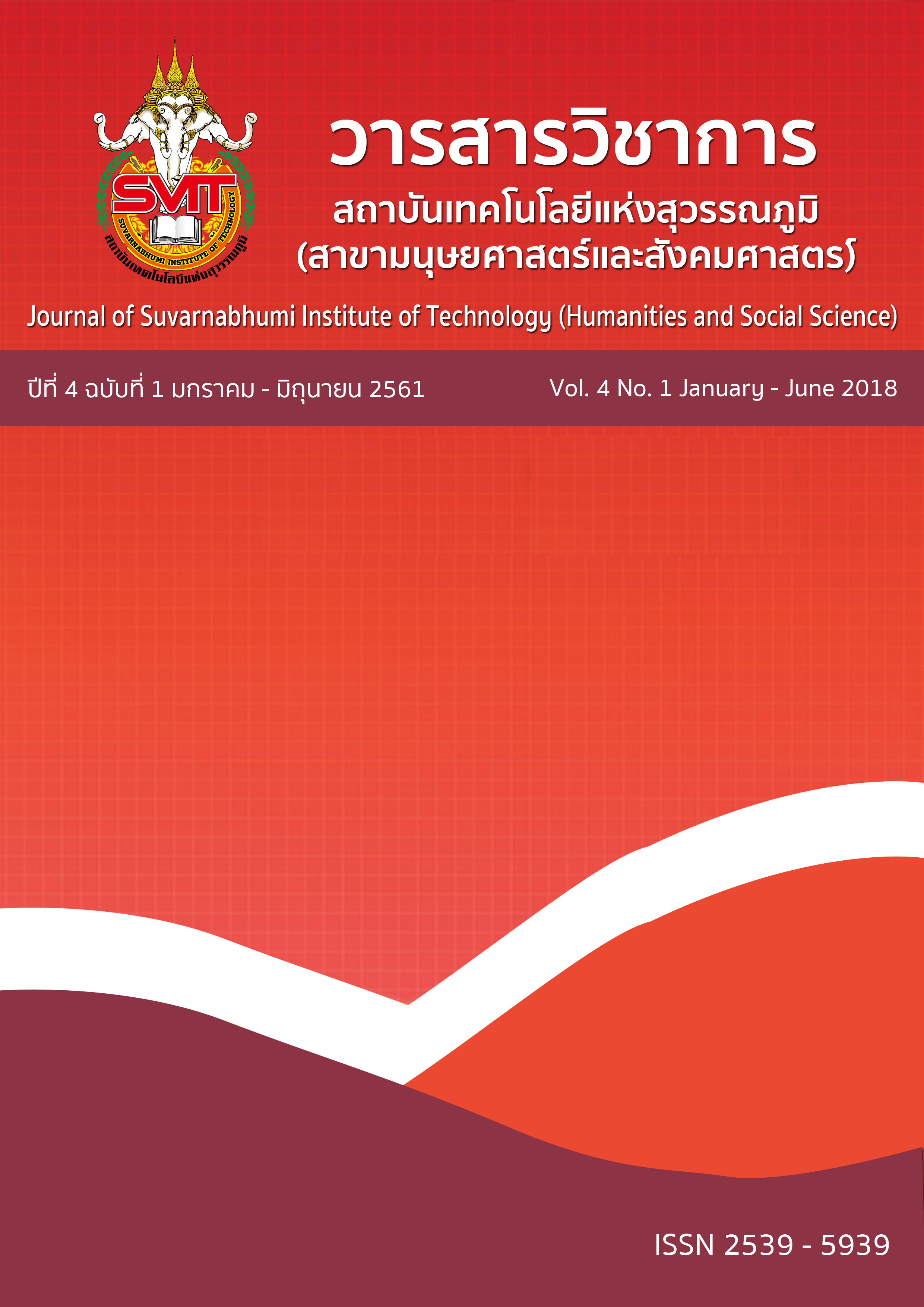LEGAL MEASURES FOR AGRICULTURIST PROTECTION CASE STUDY OF 1999 PLANT VARIETIES PROTECTION ACT AMENDMENT
Keywords:
Plant Varieties Protection Act, Agriculturist Legal Measures ProtectionAbstract
This research is the Qualitative Research. Its objectives are to study the necessary reasons of the amendment of the current laws enforcement condition, the conflict of requested issues amendment and the selection and measures that should be used to protect farmers. Researcher studied the Legal Measures in Agriculturist Protection which is the special Case Study of 1999 Plant Varieties Protection Act Amendment by using the method of document analysis, observation and in-depth interview. The research results found that 1). The crucial necessary reasons for amendment is to enroll for the International Union for the Protection of New Varieties of Plants (UPOV) member and to reform the agricultural system to be the Seed Hub Center of Thailand. 2). The condition of the 1999 Plant Varieties Protection Act enforcement, found that the current legal enforcement process can partially utilize for the legal enforcement. Thus, the law can protect for new varieties plant only, but for the parts that related to conservation and plant breeders’ rights protection are not clearly issued for the processing regulation yet. 3). The amended issues conflict occurred from the increasing of the expansion of plant breeders’ rights protection or plant varieties company’s rights protection and it caused the agriculturists and agriculturist groups associated units worried for the topic of keeping their own seeds to grow and do something illegally without the awareness of the fact and also with the benefits seeking of the foreign investors from the national native significant heritage plant seeds without fairly sharing interests. 4) Processing choices are consisted of 3 alternative ways, they are: The immediately using public hearing outcomes to apply as the legal enforcement, the assignment for various associated units to process the amendment together prior to enter into legal enforcement and to cancel the amendment request, but still allowing to enforce seriously for the application of 1999 Plant Varieties Protection Act together with the building up of knowledge, understanding and the readiness for future Plant Varieties Protection Act Amendment. 5) 4 Measures that should be used for agriculturist protection are consisted of: To finish the arrangement of Accounting assignment or Thai’s Plant Varieties Name-Lists information quickly, to specify model for agriculturist or the locally benefited from natural resources of plant varieties together with the application of the 1999 Plant Varieties Protection Act, the inventing of surveillance mechanism in enrollment of Thai’s genetic materials improvement and the creating of developing countries’ group collaboration that have various bio-resources in order to increase trade negotiation power.
References
___________.(2560 ข). ร่างพระราชบัญญัติคุ้มครองพันธุ์พืช พ.ศ. ...... กรุงเทพฯ: กระทรวงเกษตรและสหกรณ์.
___________.(2560 ค). สรุปสาระสำคัญในร่างพระราชบัญญัติคุ้มครองพันธุ์พืช พ.ศ. ...... กรุงเทพฯ:กระทรวงเกษตรและสหกรณ์.
กองคุ้มครองพันธุ์พืช. (2542). พระราชบัญญัติคุ้มครองพันธุ์พืช พ.ศ. 2542. กรุงเทพฯ: กระทรวงเกษตรและสหกรณ์.
ธนพัฒน์ เล็กเกียรติขจร, อรรัมภา ไวยมุกข์ เอกพล ทรงประโคน และศิริศักดิ์ จึงถาวรรณ. (2556). มาตรการทางกฎหมายเพื่อการควบคุมการใช้สิทธิในทรัพย์สินทางปัญญาอย่างเป็นธรรมด้านเทคโนโลยีชีวภาพทางการเกษตรของไทย. วารสารการเมือง การบริหาร และกฎหมาย, 5(3), 149-180.
ธนิต ชังถาวร และคณะ. (2550). การศึกษาผลกระทบการที่ประเทศไทยจะเข้าร่วมเป็นสมาชิกอนุสัญญาระหว่างประเทศว่าด้วยการคุ้มครองพันธุ์พืชใหม่ (อนุสัญญา UPOV). กรุงเทพฯ: รายงานการวิจัยเสนอกรมวิชาการเกษตร กระทรวงเกษตรและสหกรณ์.
ธรรมสรณ์ ลิ้มประไพพงษ์. (2550). กฎหมายเกี่ยวกับความปลอดภัยทางชีวภาพของพืชดัดแปลงพันธุกรรมในประเทศไทย. (วิทยานิพนธ์นิติศาสตร์มหาบัณฑิต สาขาวิชากฎหมายทรัพย์สินทางปัญญาและเทคโนโลยีสารสนเทศ, มหาวิทยาลัยกรุงเทพ).
เบญจมาภรณ์ ว่องประชานุกูล รุ่งแสง กฤตยพงษ์ และภูมิ โชคเหมาะ. ( 2557). มาตรการทางกฎหมายในการให้ความคุ้มครองพืชสมุนไพรไทยเพื่อรองรับความตกลงว่าด้วยการทงทุนอาเซียน. วารสารบัณฑิตศึกษา มหาวิทยาลัยราชภัฏสวนสุนันทา, 7(2), 14-21.
วิฑูรย์ เลี่ยนจารูญ. (2560). การยกเลิกกฎหมายคุ้มครองพันธ์พืช 2542 และร่างกฎหมายใหม่ตามแนวทางUPOV 1991: ผลกระทบต่อเกษตรกรรายย่อยและทรัพยากรชีวภาพ. กรุงเทพฯ: มูลนิธิชีววิถี.
วิวิธ วงศ์ทิพย์. (2557). แนวทางการคุ้มครองภูมิปัญญาท้องถิ่นของไทย: ศึกษาเปรียบเทียบประเทศไทยกับประเทศอินเดีย. สุทธิปริทัศน์, 28(87), 323-344.
สงกรานต์ จิตรากร. (2552). สิทธิเกษตรกรเกี่ยวกับพันธุกรรมพืช. เอกสารประกอบการบรรยาย การประชุมวิชาการข้าวและธัญพืชเมืองหนาว ปี 2552 วันที่ 9-11 มิถุนายน 2552 ณ โรงแรมซีบรีซ จอมเทียน รีสอร์ท พัทยา ชลบุรี.
สมเกียรติ ตั้งกิจวาณิชย์ และคณะ. (2549). การมีส่วนร่วมของประชาชนและกลไกในการลดผลกระทบด้านลบจากการทาความตกลงการค้าเสรี. กรุงเทพฯ: รายงานการวิจัย เสนอต่อสานักงานกองทุนสนับสนุนการวิจัย.
สมชาย รัตนชื่อสกุล. (2557). สิทธิเกษตรกร: ผลกระทบจากร่างแก้ไขกฎหมายคุ้มครองพันธ์พืช. แก่นเกษตร, 42(2), 139-146.
สาคร ศรีมุข. (2558). การปฏิรูประบบการเกษตร: การพัฒนาศูนย์กลางการผลิตเมล็ดพันธ์. สานักวิชาการ สานักงานเลขาธิการวุฒิสภา, 5(19), 1- 24.
สุรวิช วรรณไกรโรจน์ และ คมขวัญ หนูฤทธิ์. (2551). โครงการศึกษาผลกระทบและมาตรการรองรับจากการที่ประเทศไทยจะเข้าร่วมเป็นภาคีสมาชิกอนุสัญญา UPOV 1991. กรุงเทพฯ: รายงานการวิจัยเสนอกรมวิชาการเกษตร กระทรวงเกษตรและสหกรณ์.
สุรวิช วรรณไกรโรจน์. (2560). โครงการศึกษาวิจัยผลกระทบและข้อเสนอต่อการเข้าเป็นภาคีอนุสัญญา UPOV และการแก้ไขพระราชบัญญัติคุ้มครองพันธุ์พืช พ.ศ. 2542. กรุงเทพฯ: รายงานการวิจัยเสนอกรมวิชาการเกษตร กระทรวงเกษตรและสหกรณ์.
Andrew Pallack. (2009). Crop Scientists Say Biotechnology Seed Companies Are Thwarting Research. N.Y. TIMES, Feb 20, 2009: B8.
Balakrishna Pisupati. (2012). The Biological Diversity Act 2002 & Biological Diversity Rule. India: National Biodiversity Authority. Retrieved July 13, 2017. From http://isp.unu.edu /news/2012/files/nagoyaprotocal/02_India.pdf.
Crucible Group. (1994). People, Plants, and Patent. Ottawa: International Development Research Centre.
FAO. (1989). Report of the Conference of FAO. Twenty-fifth Session. 11-29 November 1989. C 1989/REP.
Katharine A. Van Tassel. (2009). Genetically Modified Plants Used for Food, Risk Assessment and Uncertainty Principles: Does the Transition from Ignorance to Indeterminacy Trigger the need for Post-Market Surveillance?. 15 B.U.J. Sci. Tech. L. p.222.
Muller, R. (2006). The Farmers’ rights ProJects-Background Study 3: Farmers’ Rights in Peru- A Case Study. FNI Report 5/2006.
Ravi, S. B. (2007). Realization of Farmers’ Rights: Status and Key Issues. Informal International Consultation on Farmers’ Rights. 18-20 Sept. 2007, Lusaka, Zambia. P.27-28.
UPOV. (2006). International Convention for the Protection of New Varieties of Plants of December 2, 1991 as revised at Geneva on October 23, 1978 and on March 19, 1991. 31 p.
Visser, B. and N. Louwaars. (2007). Informal International Consultation on Farmers’ Rights. 18-20 September 2007. P 57-67.
Downloads
Published
Issue
Section
License
บทความที่ได้รับการตีพิมพ์เป็นลิขสิทธิ์ของวารสารวิชาการ สถาบันเทคโนโลยีแห่งสุวรรณภูมิ
ข้อความที่ปรากฏในบทความแต่ละเรื่องในวารสารวิชาการเล่มนี้เป็นความคิดเห็นส่วนตัวของผู้เขียนแต่ละท่านไม่เกี่ยวข้องกับสถาบันเทคโนโลยีแห่งสุวรรณภูมิ และคณาจารย์ท่านอื่นๆในสถาบันฯ แต่อย่างใด ความรับผิดชอบองค์ประกอบทั้งหมดของบทความแต่ละเรื่องเป็นของผู้เขียนแต่ละท่าน หากมีความผิดพลาดใดๆ ผู้เขียนแต่ละท่านจะรับผิดชอบบทความของตนเองแต่ผู้เดียว





